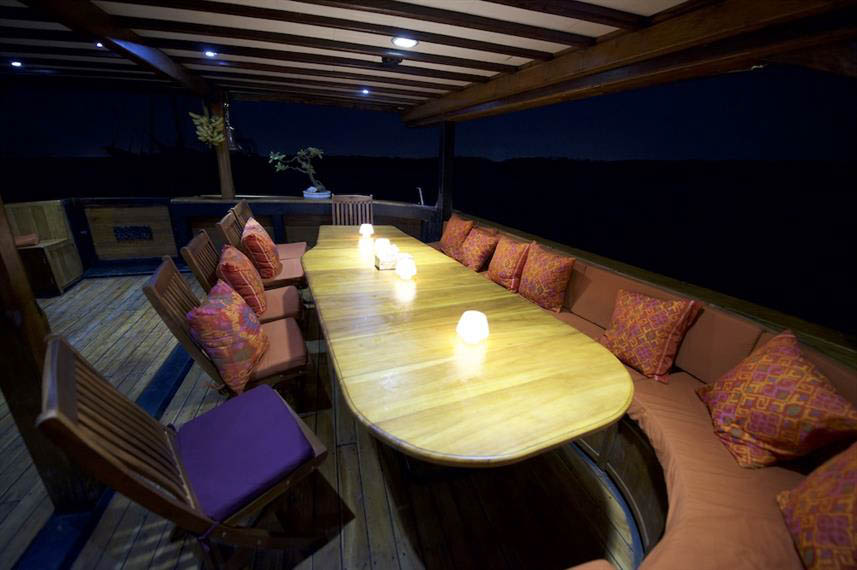The South Island of New Zealand is known for its diverse and spectacular landscapes including remote national parks, golden beaches, World Heritage status rainforests, glaciers, and Mount Cook. Made famous by The Lord of the Rings and The Hobbit, it is a popular holiday destination for those seeking outdoor adventures and adrenaline highs. The South Island is also home to a number of marine reserves, a healthy population of great white sharks and a variety of dive sites. There is something suitable for all dive preferences and abilities and here are our top picks of diving the South Island.
Mikhael Lermontov
Where is it: Port Gore, Marlborough Sounds
What makes it special: The Mikhael Lermontov, a 20,000 tonne Russian cruise liner, sank in 1986 under mysterious circumstances and is one of the world’s largest and most-accessible diving wrecks. She lies intact at a depth of 36m and her impressive size, at 175m length, makes her a unique and interesting dive. It is possible to penetrate the wreck and dive within the ballroom whilst admiring the spiral staircases and chandeliers.
Details: Whilst this wreck lies at 36m (tide depending), the hull can be reached at 15m depth. This dive is suitable for Advanced Open Water recreational divers and technical diving is available. An orientation dive is recommended before penetrating the wreck and visibility ranges from 5-20m. The main diving season is October to April, with water temperature ranging from 12 °C in winter to 20 °C in summer. A 7mm wetsuit or drysuit is recommended and, as with any wreck dive, we recommend carrying a torch and dive knife. Try Go Dive or Waikawa Dive Centre.
When to go: February – April for warmer water temperatures.
Rewaka Caverns
Where is it: Nelson
What makes it special: The Riwaka Caverns offer an interesting freshwater cave dive that is suitable for relatively inexperienced divers. This subterranean cave system contains two sumps and the entrance lies at the bottom of Takaka Hill, surrounded by ancient forests. Stalactite and stalagmite formations and a waterfall of pink limestone in sump two are highlights of caverns.
Details: The dive site is suitable for Advanced Open Water dives accompanied by experienced cave divers who know the caverns. Cave diving rules apply and, as this is a cold water dive with an average summer temperature of 6-7 °C, a drysuit is recommended. Average dive depth is 12m. Try Dive Worldwide or Abyss Dive.
When to go: Summer for warmer air temperatures post-dive. The site is only accessible during periods of dry weather.
New Zealand Fur Seals
Where is it: Kaikoura
What makes it special: The scenic town of Kaikoura offers the opportunity to swim with playful and approachable New Zealand Fur Seals and is also home to an array of dive sites. The proximity of the continental shelf has created a biodiversity hotspot in the waters of Kaikoura, where whales, dolphins, sharks and other marine life is found in abundance.
Details: There are dive sites at Kaikoura suitable for novice and experienced divers and no prior experience is needed to swim with the seals. The water temperature ranges from 10 °C in winter to 17 °C in summer and a 7mm wetsuit is recommended.
When to go: Diving is available year round, though summer offers the best water temperature and climate for exploring the coastline and mountains during non-diving days.
Milford Sound
Where is it: Fjordland
What makes it special: The Fjordland National Park lies within the Te Wāhipounamu World Heritage Area and diving the Milford Sound marine reserve is a fascinating experience. The sheer cliff faces of Milford and heavy rainfall provide a unique ecosystem where black coral trees flourish, which are usually only present in deep water trenches. The sound is home to abundant crayfish, nudibranchs and a variety of fish species. It is also possible to see great white and other shark species, dolphins and seals whilst diving.
Details: Dive depths are variable depending on the site chosen and dives are suitable for novice and experienced divers. Discover Scuba Diving experiences and snorkelling are also available at Milford Sound. The water temperature ranges from 12 °C in winter to 14 °C in late summer, though the thin layer of surface freshwater remains a steady and cold 8 °C. A 7mm wetsuit or drysuit are recommended. Try Descend.
When to go: Summer for warmer air temperatures.
Great White Sharks
Where is it: Bluff, Southland
What makes it special: The waters surrounding Southland have a population of more than 100 great white sharks and the area is also home to whales, penguins, albatross and other wildlife species. Cage diving with great white sharks and wildlife safaris are available for diver and non-divers alike from the coastal town of Bluff and is suitable for ages 12 years and upwards.
Details: No prior experience is needed for this dive and the cage sits at the surface of the water. Trips are available December – June and a 7mm wetsuit is recommended given the lack of movement when observing sharks from the cage. Try Shark Dive New Zealand or Shark Experience.
When to go: December – June. Peak season is the summer months of January and February







